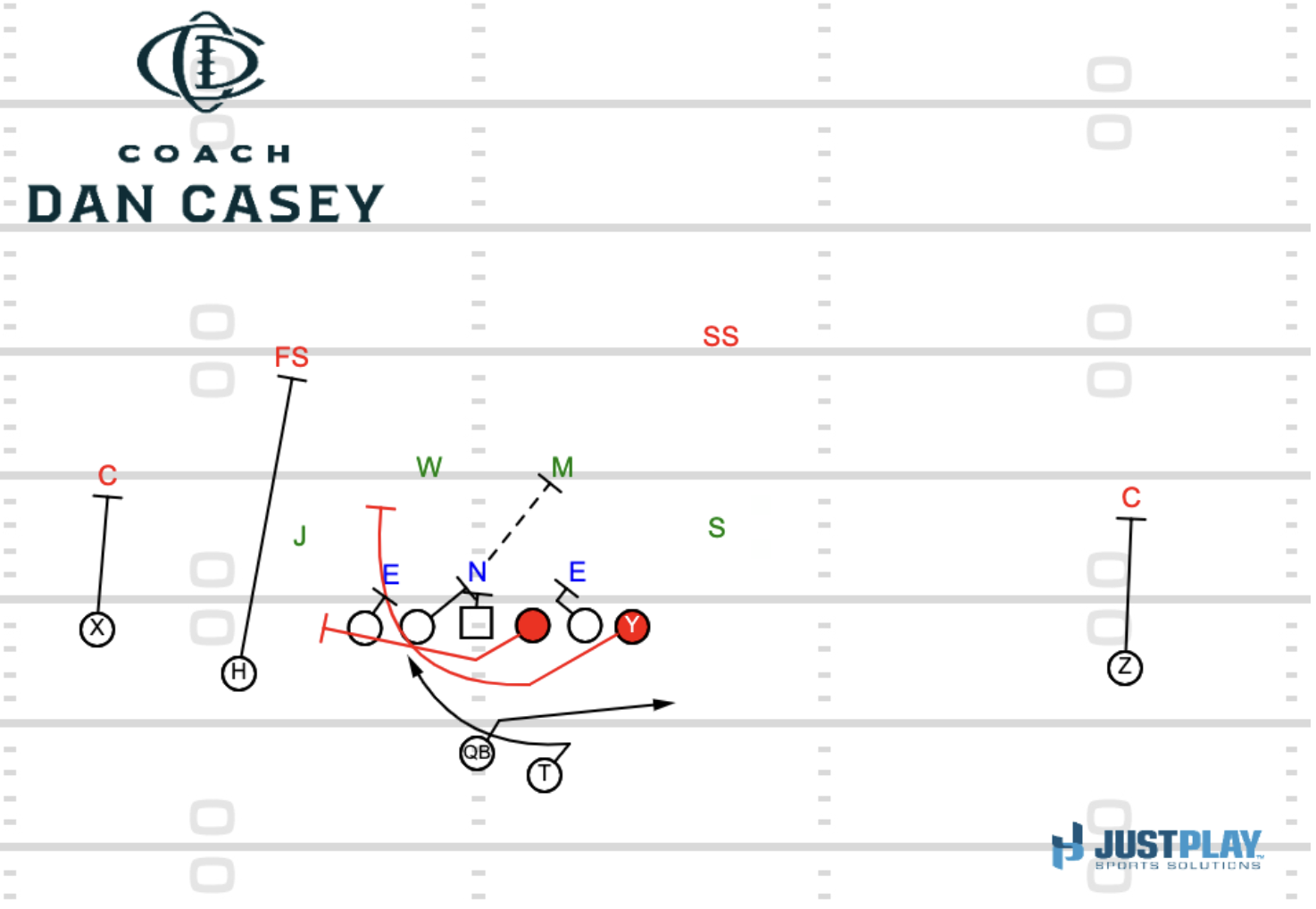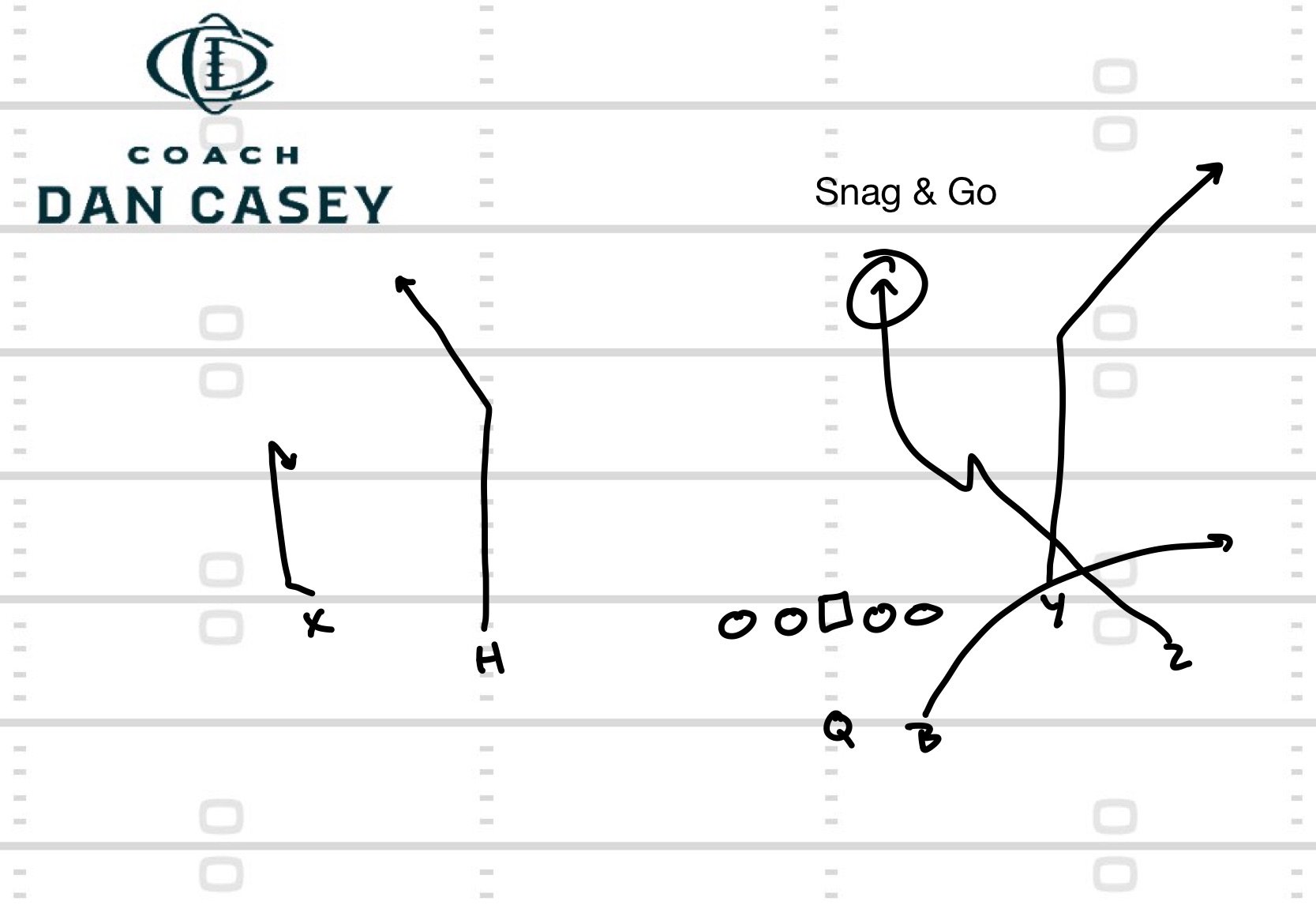Josh Gattis was just given the Broyles Award as College Football’s top Assistant Coach. Michigan has had a great year and I have been impressed with the sequencing of offensive play calls and the creativity of their trick plays. Their Flea Flicker series has led to some big plays in crucial situations. The ability to execute these plays has given them important swings in momentum.
Formation Unbalanced
TE/Wing Trey
Jet Motion from the Boundary WR
Flea Flicker Max Protection
Post/Wheel the Field
Bunch into the Boundary
Jet Motion
Flea Flicker (Center Pull 6-Man Protection)
Post/Wheel + Crosser
Flea Flickers are obviously categorized as trick plays, but if repped properly they can become an intensification of your Play Action Passing Game. If you see Flea Flicker as Play Action, it allows you to layer in Passing Concepts like “Yankee” and not just use it to take a deep shot. Purdue coach Jeff Brohm uses Flea Flicker so consistently that he throws Screens off of it. I wouldn’t be surprised to see Michigan add in another wrinkle off Flea Flicker in the playoffs.









